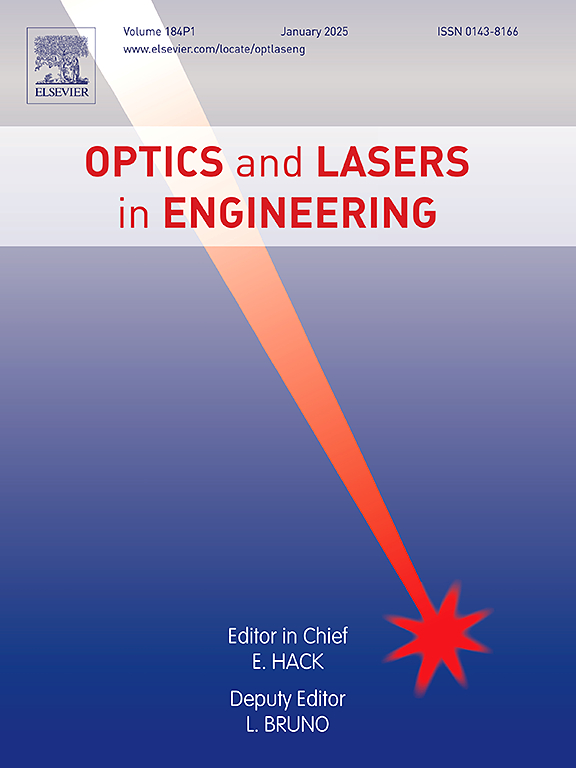基于定制设计的高填充系数非对称全息微透镜阵列的先进3D AR显示
IF 3.5
2区 工程技术
Q2 OPTICS
引用次数: 0
摘要
本研究提出了一种通过定制设计的不对称全息微透镜阵列(a - hma)增强三维增强现实(AR)显示的新方法。A-HMA通过平衡空间分辨率、视场(FOV)和填充因子来增强AR显示系统的性能。它确保了固体体积光束剖面的均匀衍射,同时保持了平滑的3D效果。在制作过程中,生成了凹相位轮廓的计算机生成全息图(CGH)图案,并与全自动全息波前打印结合使用。数字计算的微透镜功能通过精确的微尺度全息波前打印顺序记录在单个薄HOE板上,确保高填充系数和均匀性,这两者都是高质量AR可视化的必要条件。通过全息波前印刷系统精确制造的六边形hogel布局的不对称结构增加了填料密度和角覆盖,从而有助于提高光效率和空间采样性能。为了实现无缝、逼真的三维场景重建,采用基于计算机生成积分成像的方向逆传播算法生成六边形元素图像阵列。该算法针对制造的A-HMA进行了优化,确保了AR显示中真实物体的高效计算和准确重建。所提出的3D AR系统成功地以高清晰度重建了立体3D场景,提供了身临其境的AR体验。实验结果验证了该系统的有效性,展示了其在下一代AR显示应用中的潜力。本文章由计算机程序翻译,如有差异,请以英文原文为准。
Advanced 3D AR display based on custom-designed asymmetric holographic microlens array with high fill factor
This study presents a novel approach for enhancing three-dimensional (3D) augmented reality (AR) displays through the custom-designed asymmetric holographic microlens array (A-HMA). The A-HMA is specifically designed to enhance the performance of AR display system by balancing spatial resolution, field of view (FOV), and fill factor. It ensures uniform diffraction for a solid volumetric beam profile while maintaining a smooth 3D effect. During the fabrication process, a computer-generated hologram (CGH) pattern of the concave phase profile is generated and employed in conjunction with fully automated holographic wavefront printing. The digitally computed microlens function is sequentially recorded onto a single thin HOE plate through holographic wavefront printing at the precise micro-scale, ensuring a high fill factor and uniformity, both of which are essential for high-quality AR visualization. The asymmetrical structure of the hexagonal hogel layout, precisely fabricated via the holographic wavefront printing system, enhances both packing density and angular coverage, thereby contributing to improved light efficiency and spatial sampling performance. For seamless and realistic 3D scene reconstruction, a hexagonal elemental image array is generated using a direction-inversed propagation algorithm based on computer-generated integral imaging. This algorithm is optimized for the fabricated A-HMA, ensuring efficient computation and accurate reconstruction of real-world objects in the AR display. The proposed 3D AR system successfully reconstructs volumetric 3D scenes with high clarity, providing an immersive AR experience. Experimental results validate the effectiveness of this system, demonstrating its potential for next-generation AR display applications.
求助全文
通过发布文献求助,成功后即可免费获取论文全文。
去求助
来源期刊

Optics and Lasers in Engineering
工程技术-光学
CiteScore
8.90
自引率
8.70%
发文量
384
审稿时长
42 days
期刊介绍:
Optics and Lasers in Engineering aims at providing an international forum for the interchange of information on the development of optical techniques and laser technology in engineering. Emphasis is placed on contributions targeted at the practical use of methods and devices, the development and enhancement of solutions and new theoretical concepts for experimental methods.
Optics and Lasers in Engineering reflects the main areas in which optical methods are being used and developed for an engineering environment. Manuscripts should offer clear evidence of novelty and significance. Papers focusing on parameter optimization or computational issues are not suitable. Similarly, papers focussed on an application rather than the optical method fall outside the journal''s scope. The scope of the journal is defined to include the following:
-Optical Metrology-
Optical Methods for 3D visualization and virtual engineering-
Optical Techniques for Microsystems-
Imaging, Microscopy and Adaptive Optics-
Computational Imaging-
Laser methods in manufacturing-
Integrated optical and photonic sensors-
Optics and Photonics in Life Science-
Hyperspectral and spectroscopic methods-
Infrared and Terahertz techniques
 求助内容:
求助内容: 应助结果提醒方式:
应助结果提醒方式:


